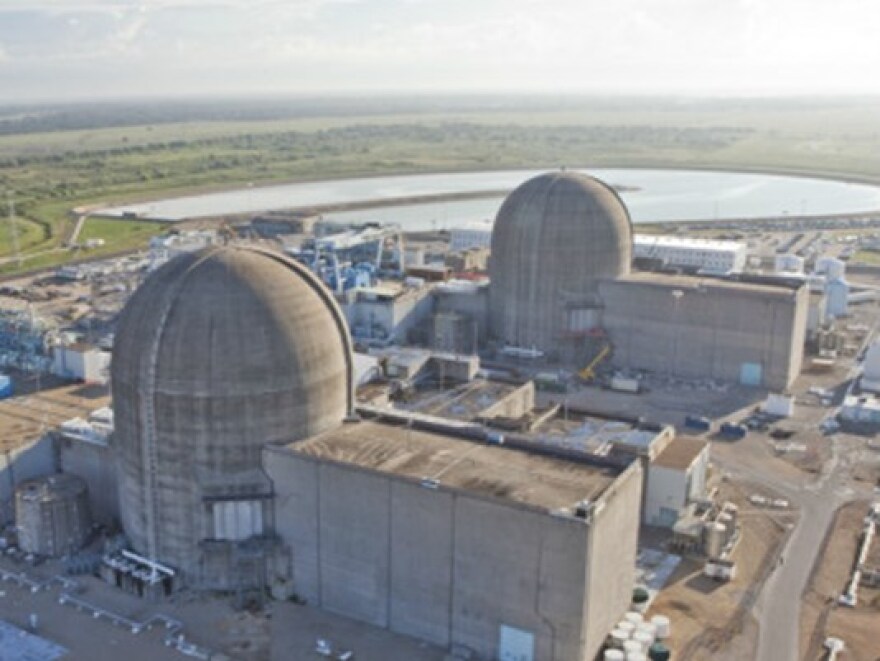When Hurricane Harvey hit the Texas coast the South Texas Project nuclear power plant was put through its toughest weather test since going online in 1988. After the storm, questions are being asked about the decisions made and public safety.
When Hurricane Harvey entered the Gulf of Mexico on August 23rd it quickly grew into a category 4 storm and the South Texas Project engaged its Severe Weather plan.
Two days later, Harvey made landfall at Rockport – 100 miles to the South of the STP.
And as a record amount of rain fell, citizen nuclear watchdogs worried, like this YouTube poster, “WheepingWilow2 4U," who wrote: “Hello Youtubers it is 8-31-2017. Well I’ll be dammed I just got off the phone with NRC. They tell me nothing’s wrong at that nuclear power plant – South Texas Project. Well, something ain’t right here.”
STP is located in Matagorda County – 70 miles Southwest of Houston - where a mandatory evacuation order was in effect.
Much of the area was without electricity, running water, medical and law enforcement services. Still, the STP maintained operations at full power.
“Given this unprecedented storm and a degraded radiological emergency plan – it was a gamble which we feel wasn’t necessary,” said Paul Gunter, the director of the Reactor Oversight Project at Beyond Nuclear. He’s critical of the decision not to shut down the STP reactors during Harvey.
“When we are talking about an inherently dangerous technology such as nuclear power, is there is a balance that has to be struck between public safety margins and the financial production margins of these facilities. And it simply wasn’t worth the risk,” he said.
Mike Schaeffer, STP General Manager, said there was no gamble.
“Nature can throw some stuff at us and at some time we have protocol that says it’s not prudent to operate the plant specifically in this case there was nothing that challenged the operation of the plant,” said Schaeffer.
Schaeffer said STP operated under the Nuclear Regulatory Commission protocols. NRC inspectors were on site during the storm and have said they were comfortable with the decisions made.
David Lochbaum is a nuclear engineer and the director of the Nuclear Safety Project for the Union of Concerned Scientists. He said it looks to him like the STP didn’t take any unnecessary chances.
“We understand that the plant experience Harvey fairly well,” said Lochbaum.
But Lochbaum said if Harvey gave Matagorda County a direct hit and they received that record breaking rainfall that Houston got - things could have been different – but then the plant could have been safely shutdown.
Schaeffer said a shut down is always an option had the weather deteriorated to the point where STP or NRC guidelines were exceeded.
“Our operators are trained to shut down the plant. Literally we can shut down the plant in 5 to 6 hours. Open up the breaker and take the generation off of the grid,“ said Schaeffer.
But Lochbaum says taking the STP off the grid during the storm could also be a public safety concern.
“People who don’t have power, as Puerto Rico is experiencing right now, there’s a public safety component associated with that as well – so the challenge is to balance those competing interests.“
STP provides 2,700 megawatts of electricity every day. That’s enough to power for two million Texas homes and businesses. It’s jointly owned by Austin Energy, NRG, a private firm, and San Antonio’s CPS Energy, which owns 40 percent of the plant.
Looking at the flooding Lochbaum said the only possible threat to STP might be a local dam failure.
“Dam failure coupled with heavy rainfall might have put the plant in some jeopardy but then you are starting to string together some “what if’s””
Nevertheless – Lochbaum said all risk in these situations needs to be taken seriously as we are seeing with the Fukushima Japan disaster. That radioactive clean-up is expected to cost 200 billion dollars.
“One bad day at a nuclear power plant can wipe out decades of good days," said Lochbaum.
And everyone agrees – they never want to see STP have one bad day.





